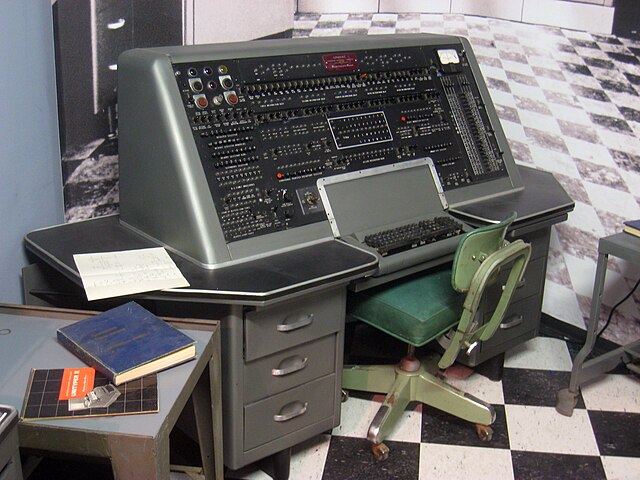The 1950s was a pivotal period in technology, especially in the radio and television industries, as it brought about the advancement in the viewing and listening experience of people who are at home. To have a better idea of the advancements in technology that occurred in the 1950s, here is a brief timeline of the said period.
1950
The year 1950 serves as a breakthrough year for television, as it was during the said year that the first commercially available color TV was introduced. This color television system was developed by a Hungarian-American engineer named Peter Goldmark on August 29, 1940, although it was only made available to the public in 1950. The color on the television screen was achieved by utilizing a rotating wheel that has alternating colors of red, green, and blue (RGB). During the 1940s, the color television system by Goldmark was incompatible to most black and white television sets, but in 1950, RCA and NBC’s design teams improved upon Goldmark’s design so that it can be compatible with existing sets.
1951
In 1951, the first commercially available computer in the world, which was called the Mark I, was introduced by Ferranti International. The first Mark I was sent to the University of Manchester in the United Kingdom on February 1951, and its date of delivery was ahead of the United States’ UNIVAC I (UNIVersal Automatic Computer I) by one month since the latter was sent to the United States Census Bureau on March 1951.
1952
In this year, the Federal Communications Commission (FCC) lifted their freeze on licensing TV stations, as they were flooded with applicants that wanted to capitalize on the rise of cable TV in the United States. Cable TV was first utilized in 1948 as a way for mountainous areas like Arkansas and Oregon to have better or clearer television reception. By using the said technology, each home’s TVs are connected to a large “community antenna” via coaxial cables. The large antenna will then be responsible for getting a better signal for television channels. Upon seeing the potential that cable TV could bring to a bigger market, many television companies started applying for TV station licenses, and most of these licenses were only granted in 1952. The FCC freeze was also lifted because they wanted more TV channels, as there were only 12 channels before 1952.
1953
In 1953, the FCC made the Compatible Color NTSC TV by RCA the standard color television system that should be followed, copied, or replicated by other companies who wish to transmit or receive signals. Before making the RCA TV as the standard in the industry, the most common color system that is utilized in the United States was the CBS color TV. The problem with the CBS system was that its signals could not be received by older black and white television models, and most of the television sets that were used at homes during that time was black and white. To solve the problem of inferior television sets not getting signals for color systems, the FCC decided to appoint RCA’s color system, as it is revealed to be superior to the CBS system since it can transmit signals to older television sets.
It is also around the same time when the film industry began experimenting on different aspect ratios to make movies a little bit more different than TV shows. What they came up with was the widescreen aspect ratio, which allows a much better viewing experience on a larger screen that is found in cinema houses or theaters.
1954
In the music industry, the 45rpm vinyl records are becoming as common as 78rpm records. It is a known fact that the 78rpm vinyl has dominated the market since its introduction in 1925, but with the creation of the 45rpm, the 78rpm found competition.
The 45rpm records became quite popular in 1954 because of its more compact size, and because it is smaller, it was easier to store, and it was also much more durable compare to 78rpm records, which are sometimes too big and floppy that they would often break easily. Although the 45rpm’s popularity peaked in 1954, the said record size has been around since 1949, when RCA-Victor created a smaller version of the 78rpm. However, there are a few drawbacks to the 45rpm. One, the 45rpm vinyl can only play a shorter song list because of its size, and another drawback to it is that it would only play properly on record players that switch speeds.
Besides the 45rpm, the 33rpm vinyl record is also gaining popularity around the same year. In the 60s, the 33rpm would replace the 78rpm as the most common vinyl record size in the world.
1955
The first accurate atomic clock was invented on August 24, 1955, by Louis Essen, an English physicist who was working at the National Physical Laboratory in the United Kingdom when the invention was created. According to physicists, the Essen’s atomic clock is more accurate in telling the time on Earth than the Sun. Essen achieved an accurate measurement of time by utilizing caesium, a chemical element that can be utilized as an atomic reference.
It was also in 1955 when RCA introduced the RCA Electronic Music Synthesizer, an electronic machine that can mimic sounds that are produced by other musical instruments.
1956
In 1956, an American electronics company called Ampex introduced the videotape during a broadcast show in April. Videotapes would soon become the standard viewing platform for video or audio playback.
The year 1956 also saw the decline of 78rpm record sales, as the vinyl market was slowly being dominated by 45rpm records. According to statistic, the 45rpm is outselling the 78rpm at a two to one ratio, which means that 45rpm gets twice the sales for every 78rpm sold. The decline of 78rpm vinyl is mainly caused by its flimsiness, as it would often break even before it reached record stores.
1957
It was in 1957 when NBC introduced the color peacock, an iconic mascot that they show on the screen before a show so that viewers will know if the show is in color. The color peacock also symbolized the start of the color TV era, and even though color systems were introduced in the early 50s, it was only around the mid-50s that color TV became accessible to almost all people. Furthermore, the color peacock was a marketing strategy for NBC to entice viewers to buy color TVs, as the beauty and elegance of the peacock cannot be seen through black and white television sets.
RCA also release the ampliphase transmitter in 1957, and this device allows radio stations to transmit stereo audio to radios around a specific state in the United States. However, it was only the AM-based stations that are equipped with the transmitter, although FM radio stations began experimenting on stereo around the same year.
1958
Because of the experimentations and implementations of stereo in 1957, the technology achieved widespread popularity in 1958. In the early 50s, mono vinyl records were the only choice for music listening, but by 1958, stereo vinyl records were introduced. However, recording and playing music in mono were still quite popular in the late 1950s, although stereo recording would eventually become the standard by the late 1960s.
Some record companies began releasing 45rpm singles in stereo by 1958, along with the release of 33rpm stereo vinyl. As mentioned previously, it would take approximately ten years before stereo music takes off, as recording in stereo weren’t widely available in studios during that time.
1959
By 1959, UHF-TV stations, which were implemented by the utilization of ultra-high frequency radio for television signals in the early 50s, were struggling, mainly due to the fact that TV owners would need to have a converter installed in their television set in order to view UHF-TV channels. Because of the lack of viewers, many UHF-TV stations have signed off. In addition, the struggle of UHF-TV stations to get viewers was also due to the popularity of cable TV, which was much easier to use and have clearer reception.



